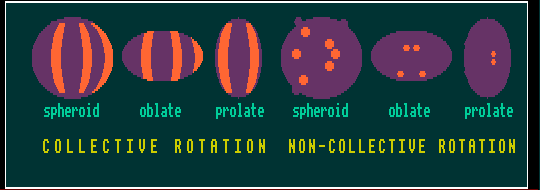

If, in decaying, the emitted gamma ray has to carry away several units of angular momentum simultaneously, the probability of decay is low. An excess energy is associated with the excess spin. The lower the energy difference and the higher the spin difference between the excited state and the ground state, the longer will be its halflife. Nuclei with an odd number of both protons and neutrons(odd/odd nuclei) can possess high excess spin states near the ground state, satisfying the criteria for long halflives. It is possible that the high-spin isomer will have a longer halflife than the ground state, if that is radioactive: a halflife difference of 108 fold has been noted in polonium-212 and its isomer (300ns for the ground state; 45s for the metastable state).
Nuclei with even-Z and even-N (those with a whole number of He-4 nuclei) can have such high excess rotational spin that the nucleus deforms into a long whirling string of alpha particles. This happens in very high-spin states of carbon-12, oxygen-16, neon-20 and magnesium-24. Others may be found. Here the nuclei are on the verge of flying apart (fission).
OBSERVATIONS On Integral/Half-Integral Spins
The nature of the spin, integral or half-integral, remains un-changed throughout the decay chain. i.e. The decay chains of integral spin nuclides are all integral spin, and those of half-integral spin are all of half-integral spin.
![]()